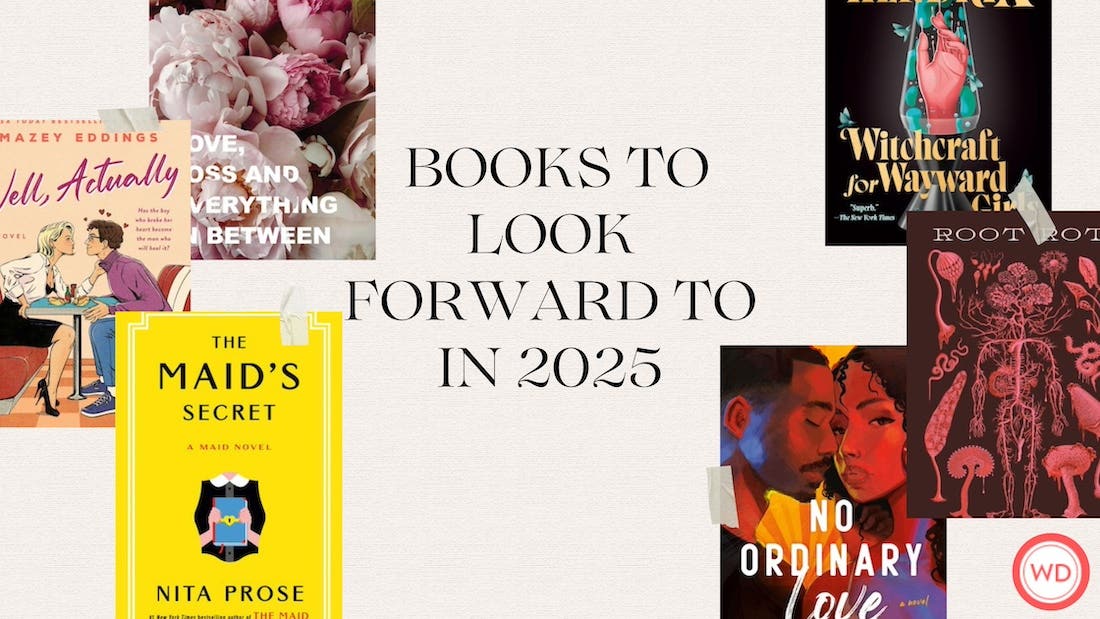3 Tips for Writing Near Futures in Fiction
Poet, author, and playwright Stacy Nathaniel Jackson shares three top tips for writing near futures in fiction.
I am a self-described serial creative and literary futurologist, actively writing fantastic and science fiction in multiple genres, including poetry and plays. In my most recent body of work, not unlike an actual futurologist, I am preoccupied with how people will live and work in the future. My world-building emerges from my interpretation of our now. The possible, even the probable.
Unfortunately, the four fires raging simultaneously in L.A. County during January 2025 is what I refer to as climate change “forever fires” in my novel The Ephemera Collector. The environmental setting of the book is foreshadowed in Alexis Eke’s book jacket illustration—eerily unrecognizable smoke and ash. The primary action of the novel takes place in 2035. “The sky was a tangelo haze.”
In this near future, carrying a full-face particulate respirator for work is as common as wearing a backpack stuffed with snacks and a water bottle. Sounds from CAL FIRE choppers dropping water and fire retardant over canyon-brush hot spots is constant, the Santa Ana winds no longer seasonal.
When considering tips for writing stories set in the near future, I recall what writer and activist Alexis De Veaux said at a reading in Washington, DC: “The future is your next breath.”
Granted, the “next breath” definition of the future is not debatable (unless you experience a sudden cardiac arrest). And although your next breath hasn’t happened yet, with focus and mindfulness, you can alter the momentum and shape of inhales and exhales with minimal effort. You can change the future.
And so it is with writing near futures.
Tip #1: Idea Generation From Financial Media
Investors are constantly looking for what is called “forward guidance” in order to make decisions. CNBC, Bloomberg, the Financial Times, among others are excellent sources for new products, general trends, micro and macro forecasts, monetary policy, and perspectives on global events. My prediction for the future…we expect…disruption of the status quo… CNBC Squawk Box is an American cable news show that consistently books CEOs promoting their next big thing, often nudged into discussing external headwinds predicted to impact the future by the show’s hosts. Capitalists are short-sighted, so the future (not to be mistaken for the futures market) is defined by quarterly earnings forecasts. Nevertheless, health science, cybersecurity, blockchain technology, and generative AI were all topics of discussion that found their way into The Ephemera Collector.
Tip #2: Word-Building for the Near Future
More than likely the future won’t sound the same as today, be it language or street sounds. The near future should be recognizable, but a bit off kilter—familiarly strange. Your reader will be able to decipher new words you’ve developed or appropriated for alternative usage through context.
~
“In my generation, we described the phenomena of experiencing painful memories as triggering. Now we say trigged. Things change; language follows. I’m okay with that. Anyway. I’m looking forward to sharing excerpts recently dilitized. These historical documents should contextualize and clarify my responses to the querysled, especially the story of BlackoutWIKA and its influence on the Diwata Collection. Assuming we have time, trigged or not.”
“Mz. Brown don’t worrtle. We’ve got you.”
~
Online etymology dictionaries are a great place to begin. Throw in an easter egg or two while developing neologisms. Have fun. The words you build don’t necessarily have to make sense in the real world, but they should fit seamlessly into the story’s world. Like an actor that writes a backstory for their character, try writing dictionary entries for your new words.
- mismem (n.) derogatory term used to describe either humans with brain fog or single-task narrow-AI memory glitches.
- linears (n.) colloquialism used by Artificial General Intelligence (AGI) modalities, slang for human.
- WIKA (v.) formerly proper noun used as verb after WIKA corporation (With Intention Kindness Always); “Despite being labeled a mismem, the health bot continued to WIKA.”
The words you create may or may not actually appear in your story, but the effort spent in development is similar to visual storyboarding for the world you’re building.
Tip #3: Cultural Ethos—What’s legal?
What’s codified as legal, and just as importantly illegal, tells your reader a lot about the world you’ve built without excessive exposition. In my full-length play The Codex of Narma, teaching Black history accurately is illegal, while Black visual art is considered contraband in the Free States after the second civil war. Far-fetched? Let your reader and/or audience decide.
Just like any story or personal essay you write, characters and setting(s) come to life with obsessive attention to detail. What do people eat? What do people wear? What do people hear? What do people see?
We’re all world-building on some level whether it’s the past, present, or future. Hopefully with these tips, writing the near future is as accessible as your next breath.
Check out Stacy Nathaniel Jackson's The Ephemera Collector here:
(WD uses affiliate links)








